Tom Lausen's Presentation at the European Parliament in Strasbourg, May 7 2025
German analyst, Tom Lausen made a detailed 50 minute presentation to a group of MEPs who are now investigating the fake 'pandemic' with criminal acts in mind relative to unexplainable death peaks
On May 7th Tom Lausen gave a detailed summary of his work and the findings from his investigative trip to Bergamo in April to representatives from the ‘Patriots for Europe’ a group of MEPs.
This appears to be the same group comprising MEPs from several different EU countries who spoken out consistently against the nonsensical measures and toxic injections throughout the 2020 global terror attack on populations disguised as a dangerous spreading novel virus.
The Patriots for Europe which now comprises 86 conservative MEPs has now set up an investigative Committee. This is, to my best knowledge, the first ‘official’ parliamentary committee anywhere in the world which seems open to challenge the whole basis for the existence of a ‘pandemic’.
A video of the whole of Tom’s lecture illustrated with his data slides, graphs and diagrams was published on YouTube. This is in German language only.
The task of producing a good quality English language transcript from this presentation has defeated me due to the amount of work entailed.
So instead here are some alternative resources and translations which I think more than adequately explain what was shared in Strasbourg:
There are three items here:
Tom Lausen’s presentation slides used in Strasbourg. Access the complete presentation here
My English subtitled video and an English language transcript of a 15-minute interview given by Tom on the new media Report24 news channel. This interview took place shortly before his presentation and is a concise summary of his key points and reasoning.
My english translation of an article published in the Epoch Times on May 19th 2025
See items 2. and 3. below:
REPORT 24 Interview with German Data Analyst, Tom Lausen
Given immediately prior to his lecture to the Patriots for Europe group representatives.
Click on the image to view the subtitled video:
Transcript
Date: 7th May 2025
FM: Here is Florian Machl for REPORT24 here from Strasbourg, from the European Parliament. Today an exciting event is happening here, namely, the data analyst Tom Lausen, who is standing next to me here will present his latest findings. A key explanation will be what he has determined in Bergamo [N Italy]. I remember our last interview that we conducted together in Graz. It was about the fact that there were very strange statistics from Bergamo [in 2020], namely, a huge peak [of deaths] seen in the statistics at the pandemic start, where many people died and then not anymore afterwards throughout the entire pandemic. And even for years afterwards. And I think there was this statistical anomaly, which, if I'm not mistaken, happened twice [in two locations] in the world and nowhere else. And a statistician, or a mathematician might then ask; How can this happen? How does this fit into the official story of the pandemic? But since then, a lot has happened. Where are we today?
TL: Hello Mr. Machl. Firstly, thank you very much that we can talk about it together today in advance. So there weren't just two places in the world, but a few more. But today I'll focus on Europe in particular, where there was this death peak, i.e. this strong eruption, this anomaly. You don't have to be a statistician to spot that. It's actually enough to be an elementrary school child to see it. But this obviously didn't occur to our politicians!
And that is why it is necessary today that we start a re-appraisal of what happened here. Re-appraisal for me, doesn't mean putting those who said some very strange things during the Corona period in a nice talk show where they chat together about it, but re-appraisal means clarifying why thousands of people [suddenly] died & then not anymore, while [officials] somehow said, there's virus spreading. But this has not killed anyone to the extent anticipated following these first peaks of suddent outbursts and then never again. And not even in Sweden, where these [lockdown] measures, which are always highly praised, did not take place.
In this respect, there will much work to be done. In particular, the question now arises, if you talk about these peaks, then you have to ask yourself, how did they come about?
And there has been a lot of speculation here. I just want to say, that you can find this in the new and now also wide-ranging alternative media channels. This is much speculation about possible reasons, such as bad health care, bad air in Bergamo and so on. I think I can clear up all of that today or a large part of it. And then it gets exciting, because what's left over is criminally relevant. And then it's no longer the processing for Mrs. Buyx [translator’s note: Mrs. Elena Buyx was Chair of Germany’s Ethics Council during the Corona event] and Mr. Lauterbach with Mr. Lanz in a TV show. But then it's about a proper re-appraisal.
So it will be more of a criminal question when it comes to re-appraisal , which must be clarified. You can no longer just talk to Ms. Buyx in a beautiful red dress and Mr. Lauterbach and Mr. Lanz about it, who then somehow believe that they could contribute something to clarification. They can't do that, but [instead] it's a criminal question, when thousands of people died who perhaps never had to die, then that's a big problem and it has to be made transparent.
By the way, we were in Italy. You said that I already speculated about the question in Graz. Did they use statistical tricks? You have to consider that. We also did that back then. And we traveled to Bergamo and counted graves in 27 cemeteries for ten days. And I'm going to report on that today in the lecture. And I'll say already in advance, because this is also a live broadcast, I can already say that the official Eurostat numbers are correct.
This raises particularly strong and new questions and I want to clarify them today. Because when you see that such a death peak also happened in small mountain villages that are far far away from Bergamo itself, i.e. 30 or 40 kilometers, then there are not many explanations, because for the people who died we also calculated the age of death and noted it from each individual tombstone. So then the question arises, where did these people [get infected] if [the death] had been due to Corona?
Where would they have been able to get infected? And 90-year-olds who died in the highest numbers, 95 and 100-year-olds — they don't drive from their mountain villages to Bergamo and get infected in some cafe, so there must be other reasons [for these deaths].
And to find out these reasons, that will be the task of EU parliamentarians, who then set up appropriate committees, or whatever. I can contribute to this today in that that some criminalistic questions can be asked that are intended for clarification.
FM: What’s the concrete information, the new information, the results from this Bergamo trip?
TL: The results are that it now has to be determined what is the single common reason to explain why all these people could have died. Because there are hospitals there, and we have looked into the hospitals, we have talked to doctors and there are very many statements.
There are also publications in scientific journals. They are not peer-reviewed, so are then experiences and personal reports from busy intensive care units. That doesn't say anything about why everything happened at the same time. That is the big problem that we want to solve here in Bergamo. And of course we asked ourselves the question, as many others have done, but not in the general public, [and certainly not] by the mainstream media such as ARD or ZDF in Germany.
We asked ourselves the question; What reasons could this [event] have had? And for that we received suggestions after we put the question: It could have been the [flu] vaccination that had been done half-a-year before. There could have been different reasons, such as the air pollution in Bergamo. These are the kind of things that we heard, or the overload of the ICUs.
It might also have been that people went to hospitals and were then refused admission. I read about it, that people who actually required treatment and were also possibly endangered, and very sick were sent away. These can all be reasons, but it does not explain why so many 90- , 95- and 100-year-olds actually died. And we don't know if they died at home or in the hospitals.
We actually have to consider things that no one has thought of yet. There was, for example in Milan — so in Milan and Bergamo, there were these death peaks, but not in Rome. And if you now say, OK, it was the measures [NPIs] and people lost their will to live. You could also take that as one of the reasons. Then it would also have to have happened in Rome. And because we don't see this happening in the same way all over the world or in all of Europe at least, then we have to assume that there may be other reasons. And there one has to look at the first [PCR] tests very clearly, for example, to see whether they may have caused great damage to old people. That would now, for example be an investigation task in the re-appraisal. and that's our result from Bergamo.
FM: To explain it mathematically, as I understand it, normally if you say this virus would be the reason behind what happened, then you would actually have to see the same curve for each population. At some point patient X will get infected, that spreads and then you would have to see roughly the same course, it increases, then there are measures, if you want to believe that, and then it should flatten again at some point.
We don't see all that in this Bergamo curve, but it really goes very steeply up, very steeply down. And that's so incredibly strange that even a non-mathematician should understand that it doesn't fit the stories.
TL: Exactly, it's not a real infection curve as you would expect in infectious epidemiology. But I can only give my research for the best [translator’s note: i.e. my opinion]. Of course, you have to ask infectious epidemiologists how something like this works.
Of course, the interesting thing, which we also came across, is that in other regions, such as in Rome, there were many infections, but you don't see this death peak. And that was also the case in Vienna, it was also the case in Kärnten and so on. And you just don't see this peak at certain points, even though there were these numbers of infections. Then you can only ask yourself, was it the same virus? Was it a virus at all? That's actually the next question.
Because if there are too many deaths in one region and not in the other region, although so many infections have been measured in both regions, then it can't be. And the second thing is, if there are still so many PCR-measurable viral infections after that, why didn't they die anymore? Yes, so then you have to ask yourself, did they do something completely wrong at the beginning? So you really get into such an elaborate investigative situation, where you just have to say that this has not yet been addressed. We have asked the federal government in Germany, they should answer to that yesterday, they also did. They said they have no knowledge that it could have been anything other than Covid. So they, too basically used Bergamo as a reason to elevate the risk level, but they never researched what actually happened there. So that means it didn't interest them at all.
FM: You They don't want to know, you they didn't know back then, there are other reasons. That would be my final question. You did a lot of research on the participation of the military. That was also very noticeable, not only in Bergamo. In Austria, Kasperl in a camouflage suit suddenly appeared in TV shows. Also in Germany, very high-ranking military suddenly took over command. And in Bergamo we saw these pictures from Bergamo, these military trucks that were completely useless, driving back and forth. I would also be interested in the context of what was the role of the military and secondly, do we know how many coffins were actually really in these trucks?
TL: Exactly, these are actually two very good questions that we also wanted answers for. We talked to doctors, we met for dinner with doctors and one doctor was particularly prominent. She also showed photos of military trucks that were standing behind her hospital all day.
And she said — that was her impression from the beginning, she said, This is a military action. So we have to take that seriously. So this is a highly decorated, I would say, doctor, to stay in military language. You have to take that seriously when this impression arises in a doctor who works in the hospital, that it was a military action.
And of course the question is open whether in these trucks —we asked them were there several coffins or not? We have not been able to determine that to this day. In this respect, this question remains open to the public.
The role of the military is quite clear to see in Germany. It looks as if the government basically avoided disclosing from the start that a Mr. Dr. Hans-Ulrich Holtherm, a [Bundeswehr] general staff doctor, then general doctor, took over leadership of the Federal Ministry of Health's crisis team staff in March 2020.
And that was a bit early and a bit strange. He had already been recruited by Mr. Spahn back in January 2020, you could say, for a new department had been transferred to the RKI. But the peculiarity about about Mr. Holtherm's appointment is that, if he had not only been the crisis manager, he would have had a kind of manager role.
But we also found videos of him where he talked to the DEHOGA, the German Hotel and Inn Association in a Zoom call. And this call is public. And in this call he speaks about the limitation of basic rights of those not vaccinated and, if vaccinated, the easing of basic rights. From our point of view, this is a combination between is involving a political action or at least a political action in the background. You have to say that, because he didn't discuss it publicly in a talk show with Mr. Lanz, but he discussed it with the Hotel and Inn Association, which then again has impact on the hotel and inn business, where one [members of the public] may no longer get access or something like that and it is not at all announced. But he didn't appear in any public talk show and it was also forbidden at some point over these years to show Mr. Holterm in a public setting.
FM: I don't know this video yet, but what was the impression? Did he give orders there, basically? So did you have the feeling that he controls this pandemic and says who has to do what?
TL: No,you can't say that. If you look at the video, you get a bit of the impression that he is a very friendly man and that he just talks about it on a factual level. But still, of course, it doesn't fit, because he has to know these questions too. He is experienced, as a general.
He is experienced, so he can't just, when he's a doctor, not discuss fundamental rights issues. That just doesn't work. And that will have to be clarified, how he can afford to make such faux pas and how this can be possible and why this has not yet been brought to the public. So therefore, of course, also in other countries where admirals or generals have also been used, in Austria and in Italy, I mean, a general has also been used.
The things are very similar. And when we heard that at the beginning of Covid, it was also said there that you are not allowed to do autopsies as in Germany, we were impressed. Because of course, it came from the doctors. Of course, that happened in Germany as well. And then I come back to the question, why did all these people die, these ones which we counted? Why did they die? And if they are not allowed to be autopsied, then they have to be looked at very closely. Actually, all testable material must be obtained, so that this can be clarified again.
FL: Thank you very much for the concise insight for our viewers. There is a link below to the entire event in Strasbourg, where the data, the mathematical data, the findings were described in great detail.
TL: Thank you. You're welcome, Mr. Machl.
The independent journalists of REPORT24 are on the move in several countries. We report the side of stories, which the mainstream media withhold from you. Our work is only possible via regular support from our viewers and readers. Vielen Dank!
Epoch Times Article
Author: Patrick Reitler
published: 19th Mai 2025
Tom Lausen dismantles the coronavirus crisis in the EU Parliament: vaccine authorisation and restrictions are without foundation
Have the coronavirus measures and the millions of vaccinations in Germany actually saved anyone's life? Data analyst Tom Lausen is not convinced of this. He recently had the opportunity to explain his doubts about the behaviour of the German health authorities in particular in the EU Parliament.
Data analyst and journalist Tom Lausen used official data to analyse the coronavirus crisis in the EU Parliament.
Photo: CreativaImages/iStock, private
"I'm here because I want to live in a society throughout Europe where I'm not constantly being lied to."
Under this premise, data analyst and publicist Tom Lausen presented his latest findings on the coronavirus policy in the EU Parliament in Strasbourg on 7 May 2025. Lausen had been invited by MEPs Christine Anderson (AfD) and Gerald Hauser (FPÖ) from the Patriots for Europe group. His presentation is available to the Epoch Times.
According to Lausen's research, there was no scientifically sound basis for lockdowns or other coercive measures.
Data analyst Tom Lausen (centre) presented his view of the coronavirus years to the EU Parliament on 7 May 2025. He is flanked by MEPs Christine Anderson (AfD) and Gerald Hauser (FPÖ).
Photo: Screenshot/YouTube/Report24
Utilisation of hospital capacity
Among other things, Lausen was displeased by the fact that the postponement of non-essential operations had been ordered solely on the basis of a presumption, without taking into account the actual capacity utilisation of the healthcare system.
After the first lockdown in March 2020, hospitals in Germany admitted significantly fewer than the usual 390,000 patients per week. The healthcare system did not reach the limits of its capacity.
Photo: Screenshot/Tom Lausen
According to Lausen's data, German hospitals had never been overloaded. It was possible that hundreds of thousands of patients were deprived of timely treatment who might have "needed help and then suffered miserably somewhere in a nursing home or elsewhere, or perhaps died".
As an example of the decline in patient admissions during the first lockdown (16 March to 5 May 2020), Lausen referred to the figures from the Institute for Hospital Remuneration Systems (InEK) for Schleswig-Holstein. In the group of over 80-year-olds alone, around 5,000 fewer patients were admitted than in the same period of the previous year, with corresponding financial losses for the hospitals.
The chart shows patient admissions to hospitals in Schleswig-Holstein during the first lockdown in 2020 compared to the same period in the previous year. Among 55,000 patients, 427 were suspected of having coronavirus.
Photo: screenshot/Tom Lausen
The DIVI Intensive Care Register provides statistics on the chronological utilisation of intensive care units (ICUs). The overall picture shows that there were no major capacity problems for either adults or children during the coronavirus years.
The chart shows the total number of free intensive care beds in Germany between 2020 and 2025, as of 14 May 2025. Photo: Screenshot/DIVI Intensive Care Register
According to the German government (PDF, page 41), however, there were regional shortages of intensive care beds in winter 2021/22 with a vacancy rate of less than 15 per cent, for example in Bremen. The government explains that the situation remained manageable at the time as follows:
"The federal and state governments introduced further measures before Christmas 2021 to slow down the rate of infection and maintain healthcare provision. The fact that the predicted burden on hospitals did not ultimately materialise is also due to these immediately implemented measures and the behaviour of the population as a whole."
Related article: https://www.epochtimes.de/politik/deutschland/politik/deutschland/zwang-als-legitimes-mittel-gegen-singulaere-krisen-prof-heinz-bude-verteidigt-corona-massnahmen-a4614585.html
Saxony: A particularly high number of "nursing care degree" deaths
Another striking point is that there have been a particularly high number of deaths in hospitals in Saxony among people with a nursing care designation [Translator’s note: German word ‘Pflegegrad’ means nursing care degree i.e. patients who require constant nursing support], while deaths without a care degree have fallen. Lausen suspects that the COVID-19 vaccination could have something to do with this. In his estimation, almost all of the people with a "nursing degree of care" are likely to have been vaccinated.
The chart shows the number of deaths in Saxony from 2019 to 2024, broken down according whether patients were those on a “Pflegergrad” care level or not.
Photo: Screenshot/Tom Lausen
Why, Lausen asks, did an unusually high number of "care degrees" die in Saxony, especially in autumn 2021? And why was this not officially reported? This once again casts doubt on certain claims made in the vaccination campaign at the time:
"If the people with a degree of care who were vaccinated were the ones who died in the hospitals, then it wasn't the unvaccinated people in the hospitals who may have morally clogged up the hospitals as unvaccinated people. Rather, it was those who had been vaccinated."
Deaths among people with a nursing degree in Saxony in the years 2019 to 2024 according to InEK. The yellow bar continues the "corridor" from 2019.
Photo: Screenshot/Tom Lausen
"Bergamo" as an argument against the success of the vaccination campaign
Could the coronavirus vaccination have saved the lives of 1.6 million people in Europe, as the MDR concluded in August 2024 with reference to a model study by the World Health Organisation? Lausen also questions this.
Related article: https://www.epochtimes.de/politik/deutschland/epoch-tv/vor-ort/stoehr-im-untersuchungsausschuss-corona-impfstoff-kann-nie-infektionen-verhindern-a5066493.html
According to Eurostat, the death figures in the Bergamo region show no anomalies, with one exception.
Photo: Screenshot/Tom Lausen
Why is that? Between February and April 2020, there was a "peak" of several thousand deaths in the Bergamo area in northern Italy - also according to Lausen's own on-site grave count - which peaked in calendar week twelve. Shortly afterwards, the figures were back within the normal death corridor.
According to Lausen's interpretation, the Eurostat mortality curves for the cities of Rome, Berlin, Valencia and Vienna, compared with Bergamo between 2011 and 2024, show almost consistently "a relatively normal mortality pattern" without any major anomalies.
"So they can't have saved anyone by anything," concludes the analyst.
The graph shows the mortality rate in four European cities between 2011 and 2024, based on Eurostat data, compared to Bergamo. Why did Rome, Berlin, Valencia and Vienna fail to produce the big peak?
Photo: Screenshot/Tom Lausen
On the other hand, Madrid, Paris, Stockholm and Brussels had also experienced a noticeable peak at the same time as Bergamo, before the death rate returned to the usual corridor there too. In Lausen's opinion, the reason for the difference to Rome, Berlin, Valencia and Vienna should be urgently clarified.
The chart shows the mortality rate from 2011 to 2024 in five European cities according to Eurostat. Only in spring 2020 was there an unusual outlier in all of them. Nevertheless, some of the measures remained in force for years.
Photo: Screenshot/Tom Lausen
In Germany, the Robert Koch Institute (RKI) is responsible for monitoring the incidence of infection, among other things. How did the outbreaks come about in the first place? Why did the RKI not react promptly when the death rate had returned to normal everywhere?
According to the German government, there is no evidence that anything other than COVID-19 could have been responsible for the initial peak situation in some regions. "According to the German government, "the measures taken [...] can once again be held largely responsible [...] for ending the situation with extreme excess mortality". (PDF, page 49/50)
For Lausen, this again sounds unconvincing: "Epidemiological justifications for these regional outliers have not yet been convincingly provided. Neither virus variants nor age structures nor the medical care situation alone can explain the pattern," he wrote when asked by the Epoch Times.
RKI head Schaade: "The pandemic is taking off at this point"
The question of the reason for the RKI's presumed lack of interest in Bergamo's quickly "normalised" mortality curve came to Lausen's mind because the then Vice President of the RKI and current head of the RKI, Prof. Lars Schaade, cited "Bergamo" as one of the main reasons for his risk upgrade in Germany in June 2024 in the Rhineland-Palatinate Health Committee, alongside eastern France and the USA. "The pandemic is taking off at this time" and "I don't need to explain further what happened in Bergamo in Italy", the committee minutes read. (PDF, page 24/25)
But that's exactly what Lausen is demanding:
"Anyone who didn't look at the [later] data from Bergamo in 2024 had no idea what they were doing in 2020."
Related article: https://www.epochtimes.de/politik/deutschland/meinung/koennen-100-aerzte-luegen-ein-kritischer-blick-auf-die-corona-krise-a4328674.html
A number of other questions still need to be answered for Lausen:
Why were slightly higher death rates again recorded in some regions at the end of 2022 than would have been expected based on the normal mortality corridor?
Why did the US pharmaceutical giant Moderna start clinical production of its mRNA vaccine Spikevax in mid-January 2020? Why was Moderna able to start its Phase 1 trial on 16 March 2020?
Why did the Italian health authority INMI ask a standing working group of the RKI for the Ebola drug Remdesivir at the beginning of February 2020?
Why was the risk upgrade in Germany from moderate to high made on 15 March by RKI President Prof. Lothar Wieler and his Vice President Schaade without involving the RKI crisis team?
When asked by the Epoch Times, the RKI stated that the institute:
"generally does not provide assessments of the situation in other countries" and "generally does not comment on internal communication within the authorities".
Everything worth knowing about the risk upgrade has been compiled in an FAQ page on the crisis team protocols. It states, among other things:
"The risk assessments were fundamentally based on the criteria of transmissibility/transmission dynamics (case numbers and trends of reported cases), severity profile of the diseases and resource burden on the healthcare system. Not all criteria had to be fulfilled to the same extent; a leading criterion could also be a reason to adjust the risk assessment."
Only the politicians decided on the resulting measures.
Lausen: "Deception by omission, that's a problem"
Lausen also criticises large sections of the press for having only disseminated separate dashboard curves with suspected coronavirus deaths from the outset, without relating these to the earlier death curves:
"From a statistical and data point of view, they have started to report incompletely. Incomplete reporting is also a lie and is not part of the truth."
The Eurostat mortality data show no major anomalies in the corridor of total mortality events in Germany from 2011 to 2023. The orange-coloured curve on the bottom right only describes the cases of people who died "from or with coronavirus".
Photo: Screenshot/Tom Lausen
"In reality, death rates were the same as they have always been," says Lausen, looking at the long-term mortality corridors. There is no "justification for the urgent authorisation of vaccines" or other measures. Therefore, "a vaccine authorisation was completely inadmissible here and also superfluous".
Nevertheless, the press coverage ultimately led to the vaccination. "That is a very clear intention that I can clearly recognise here," said Lausen.
"Deception by omission, that's a problem."
ARD sees itself as "self-critical", ZDF refers to thematic focus
In response to an enquiry from the Epoch Times, an ARD spokesperson explained that the broadcaster was unable to verify Lausen's figures. As with an earlier enquiry, she conceded that during the Corona period "orders were certainly made by those in power" that would be "viewed critically" today. ARD had learnt internally from any mistakes. In the meantime, "the self-critical reappraisal of the coronavirus pandemic" within ARD "has become part of everyday work processes".
ZDF referred to its two-week thematic focus from March 2025. In the online dossier, the broadcaster maintains, without distinguishing whether [the individual died] "of or with [covid]", that the pandemic has claimed almost 184,000 lives in Germany alone.
PEI without a comprehensive vaccine safety check
The fact that the BioNTech vaccine, which was administered millions of times, had never been tested for protection against transmission was made public by Pfizer employee Janine Small in October 2022.
A statement from PEI President Prof Klaus Cichutek to the Federal Ministry of Health also reveals that his institute was unable to assess the safety of all anti-corona vaccines as recently as 29 July 2021. [emphasis from translator]
The statement issued by the PEI on 29 July 2021 shows that the institute was unable to assess the safety of COVID-19 vaccines without external data. Photo: Screenshot/Tom Lausen
Cichutek wrote that the "pseudonym of vaccinated persons" was necessary to analyse the health insurance data and evaluate the data from the associations of statutory health insurance physicians (KVen) before safety could be assessed. The background to this is Section 13 (5) of the Infection Protection Act: According to this, only data records in which the real name of a vaccinated person has been replaced by a coded identification number, for example, may end up at the PEI or RKI - for data protection reasons. Unlike anonymisation, however, pseudonymisation of this kind must ensure that the personal reference can be restored in individual cases. A lot of work for the health insurance funds and the KVs.
Today, almost four years after Cichutek's statement, there is still no final safety analysis from the PEI, even though the first regular injection outside of the approval tests in Germany was administered on 27 December 2020. A few weeks later, Cichutek nevertheless advertised the vaccines as "safe and extremely effective". According to Lausen's research, not a single PEI employee objected by remonstration. All delays to the safety analysis were always justified by the PEI with reference to extensive preparatory work as well as personnel, technical and data protection difficulties.
Related article: https://www.epochtimes.de/politik/deutschland/politik/deutschland/pei-sicherheitsanalyse-laesst-weiter-auf-sich-warten-a4962401.html
Violations of the EU Charter of Fundamental Rights?
In 2021 and the first few months of 2022, unprecedented pressure was exerted on the unvaccinated. In the meantime, vaccination was even made compulsory for hospital staff and soldiers in the German armed forces.
Lausen comments:
"If there are 200 million doses of vaccine in people's arms and the doctor has not given all this information with each injection, then that is uninformed consent that the patient has given. And from a legal point of view, bodily harm [...] could then be considered for each case."
Related article: https://www.epochtimes.de/politik/deutschland/ein-datenanalyst-rechnet-ab-ueber-eingriffe-in-wuerde-freiheit-und-unversehrtheit-waehrend-der-coronakrise-a5131261.html?p=5136318
In his view, human dignity, the right to integrity, the protection of personal data, freedom of thought, conscience and religion, freedom of occupation and the prohibition of discrimination under the EU Charter of Fundamental Rights had also been violated, "on the basis of measures whose scientific basis was in part uncertain and whose proportionality is questionable".
Related articles: https://www.epochtimes.de/politik/deutschland/gesellschaft/gerichtsurteil-maskenpflicht-fuer-grundschueler-unwirksam-noch-keine-inhaltliche-kehrtwende-a5091144.html
and
https://www.epochtimes.de/politik/deutschland/politik/deutschland/steinmeier-will-aufarbeitung-der-pandemie-lehnt-aber-suche-nach-schuldigen-ab-a5073464.html
The analyst does not accept the argument that the PEI could not have known any better. He, too, had only ever looked at things "that were ex ante, i.e. that any politician, any actor, any authority, anyone could have had at their disposal beforehand, because I could have".
In response to a catalogue of questions from the Epoch Times, the PEI replied that it wanted to answer "as promptly as possible". After three working days, no further reply had been received.
Tom Lausen's presentation can be viewed on YouTube.
About the author:
Patrick Reitler, born in the late sixties on the edge of the republic. Studied comparative literature, information science and social psychology. Since the turn of the millennium, he has worked as a journalist, mainly in online editorial offices at public broadcasters and as a football commentator. Freelance author since the end of 2022. Primarily responsible for German politics at Epoch Times.



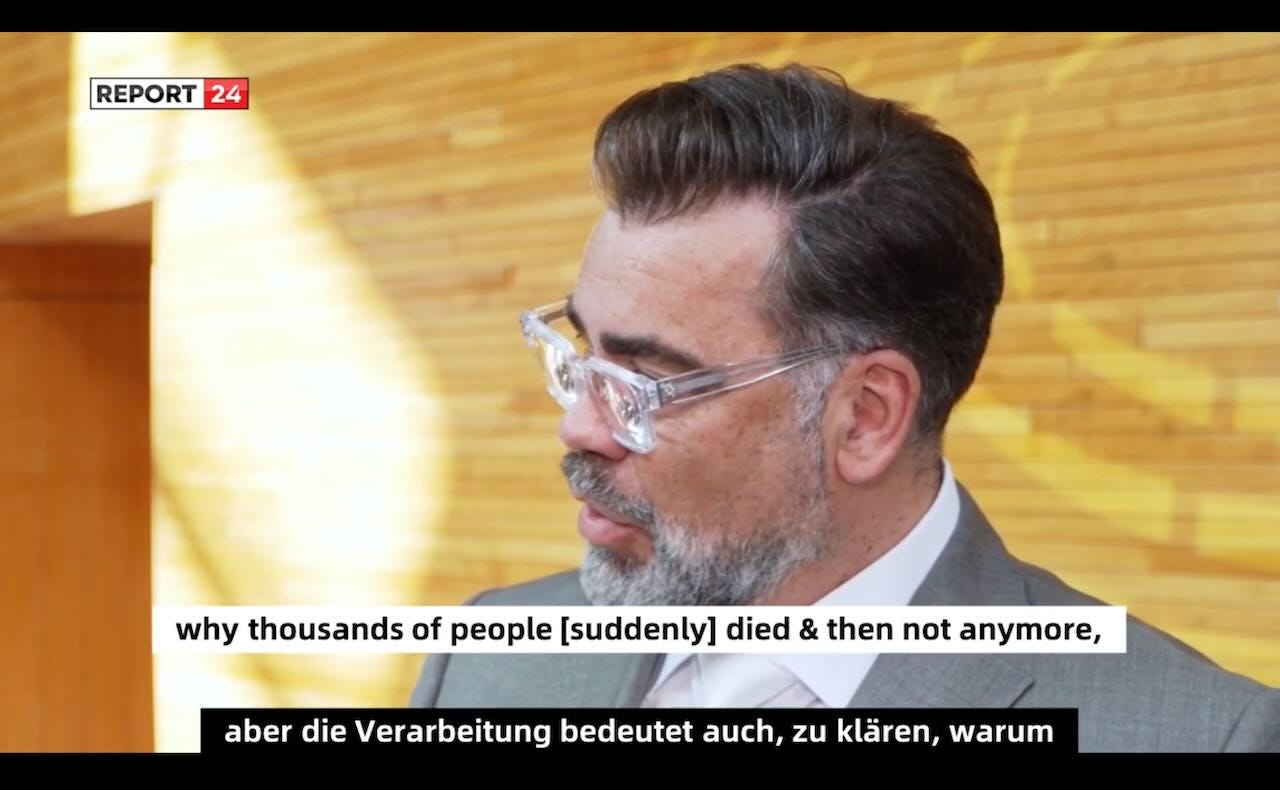

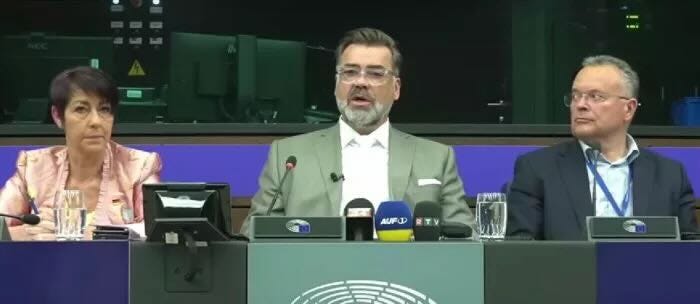
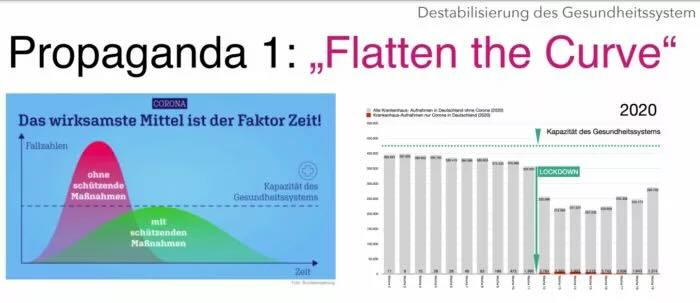

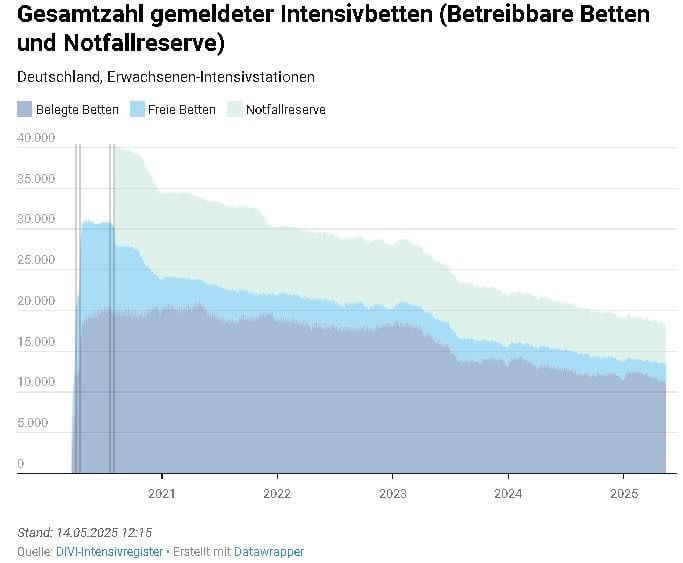
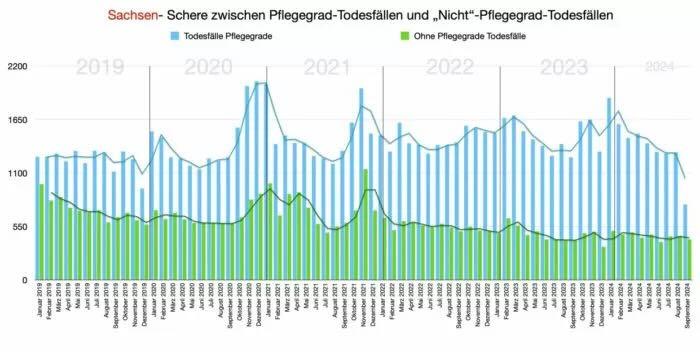
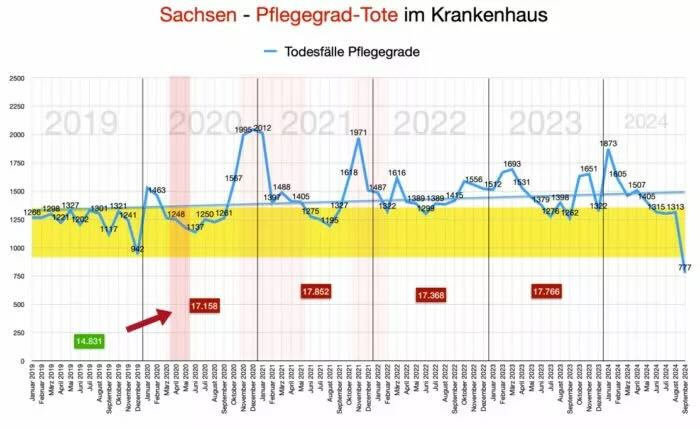
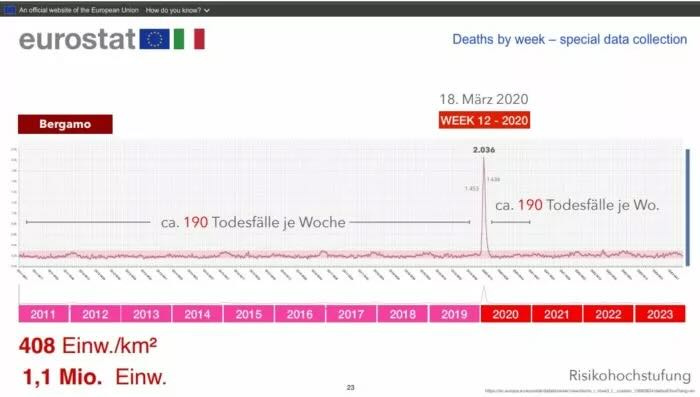
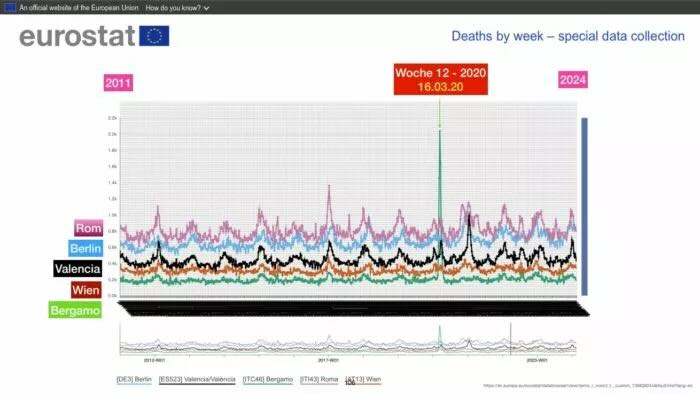
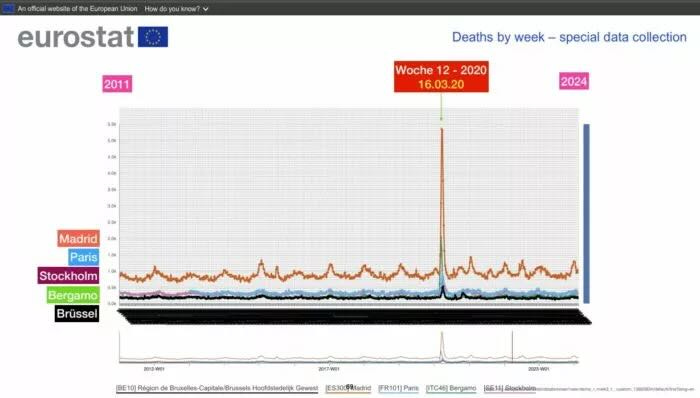
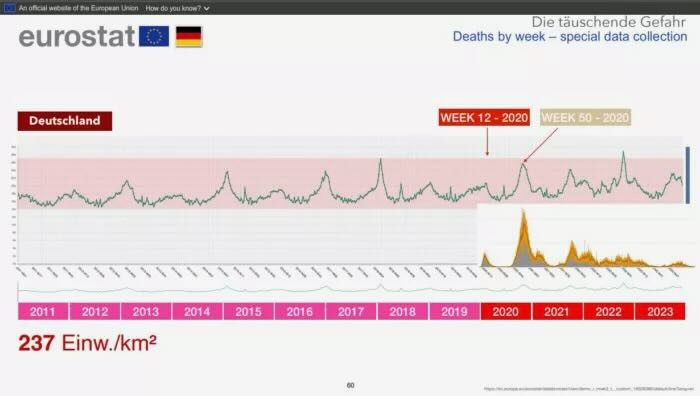

Professor Norman Fenton also looked at the issue from a data analysis point of view. His analysis is in his book Fighting Goliath.